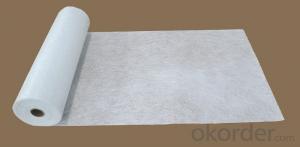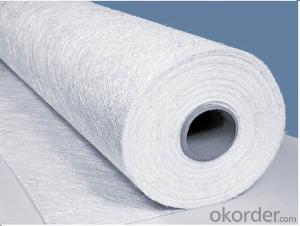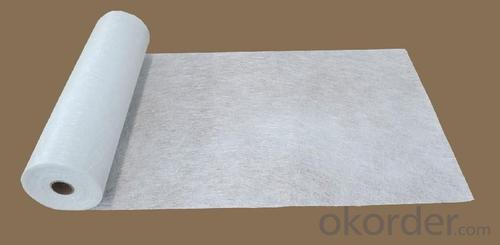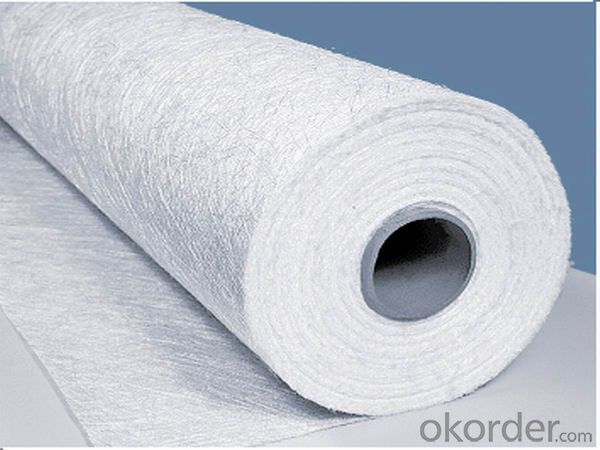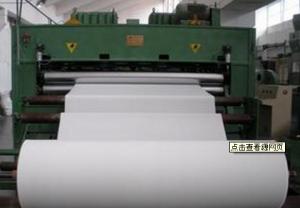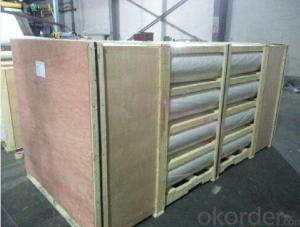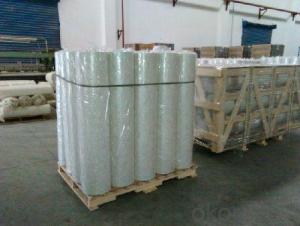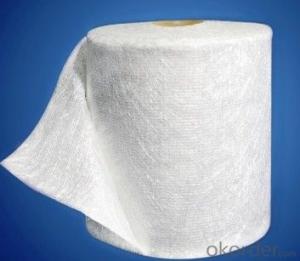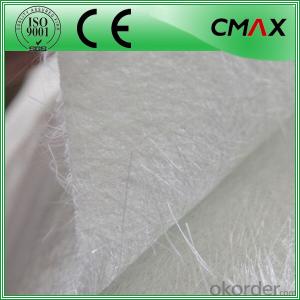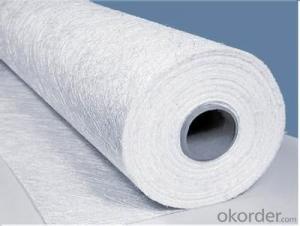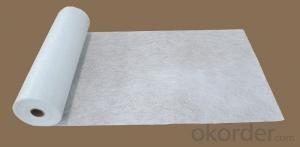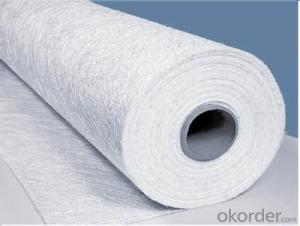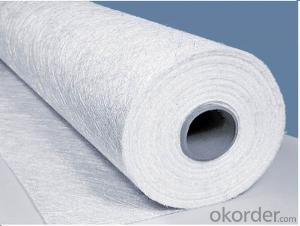Fiberglass Mat Tissue E-Glass Fiber Chopped Strand Mat Powder Bonded
- Loading Port:
- Shanghai
- Payment Terms:
- TT or LC
- Min Order Qty:
- 20000 kg
- Supply Capability:
- 200000 kg/month
OKorder Service Pledge
OKorder Financial Service
You Might Also Like
Brief Introduction
Chopped strand mat is made from chopped glass fibers, which are bonded with powder or emulsion binders. It can be used in hand lay-up process and continuous laminating process to produce FRP products, such as plates, lighting board, hull, bathtub, cooling towers, anti-corrosion materials, vehicles.
Characteristics
Good transparency for the laminates
Rapid wet out
Easy to remove air bubbles
Good dispersion and uniformity
High wet-strength retention
Good mechanical properties
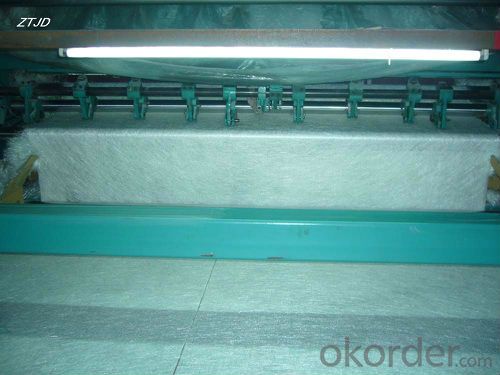
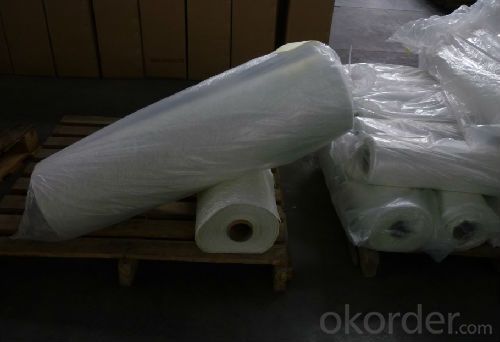
Specification:
Property | Unit | Specification | Standard |
Density | g/m2 | 80-900 | ISO 3374-2000 |
Fiber Chopped length | mm | 50 | |
Sizing | Silane | ||
Filament Diameter | um | 11-13 | ISO 1888-1996 |
Bonder Content—Powder (%) | % | 3.5 +/-1.2 | ISO 1887-1995 |
Moisture Content (%) | % | < 0.20 | ISO 3344-1997 |
Width (mm) | mm | 100-- 3200mm |
Packaging:
The packing is according customer’s requirement. Each roll with a plastic bag and carton, then pallet with shrink film wrapped.
Storage:
Unless otherwise specified, Chopped Strand Mat should be stored in a dry, cool and rain-proof area. It is recommended that the room temperature and humidity should be always maintained at 15℃~35℃ and 35%~65% respectively.
- Q: Does fiberglass mat tissue require any special maintenance after installation?
- No, fiberglass mat tissue does not require any special maintenance after installation.
- Q: What is the expected lifespan of fiberglass mat tissue?
- The expected lifespan of fiberglass mat tissue can vary depending on various factors such as the quality of the material, the environment it is exposed to, and how well it is maintained. However, on average, fiberglass mat tissue can have a lifespan of around 20 to 30 years.
- Q: What is the thermal conductivity of fiberglass mat tissue?
- Fiberglass mat tissue typically exhibits a low thermal conductivity, which falls within the range of 0.03 to 0.05 W/m·K. Consequently, it serves as an excellent insulator, effectively impeding the flow of heat. Its favorable insulative properties render it suitable for various applications, including thermal insulation in buildings, industrial equipment, and appliances.
- Q: Does fiberglass mat tissue provide any sound insulation?
- Yes, fiberglass mat tissue does provide sound insulation. It is a common material used in various industries, including construction and automotive, to absorb and reduce sound transmission. The fibrous structure of the material helps to trap and absorb sound waves, preventing them from passing through walls or other surfaces. Fiberglass mat tissue is often used as an acoustic insulation material in walls, floors, and ceilings to create a more comfortable and noise-free environment.
- Q: Does fiberglass mat tissue require any special precautions during disposal?
- Yes, fiberglass mat tissue requires special precautions during disposal. It should be handled with care and disposed of in accordance with local regulations. Due to its composition, fiberglass mat tissue can release harmful fibers when disturbed, which can be a health hazard if inhaled. Therefore, it is important to wear protective clothing, gloves, and a mask when handling and disposing of fiberglass mat tissue. Additionally, it should be sealed in a plastic bag or container to prevent the release of fibers into the environment.
- Q: What is fiberglass mat tissue made of?
- Fiberglass mat tissue is made of fine strands of glass fibers that are bonded together with a resin or binder material.
- Q: How does the strength of fiberglass mat tissue compare to other reinforcement materials?
- The strength of fiberglass mat tissue is comparable, if not superior, to other reinforcement materials. It offers excellent tensile strength, high resistance to corrosion, and good thermal insulation properties. Additionally, it is lightweight, flexible, and cost-effective, making it a popular choice in various industries such as construction, automotive, and aerospace.
- Q: Is fiberglass mat tissue suitable for oil and gas applications?
- Yes, fiberglass mat tissue is suitable for oil and gas applications. Fiberglass mat tissue is a lightweight, strong, and durable material that can withstand the harsh conditions commonly found in the oil and gas industry. It has excellent resistance to chemicals, including oil and gas, making it an ideal choice for applications such as pipeline insulation, tank lining, and filtration systems. Additionally, fiberglass mat tissue has low moisture absorption, good thermal insulation properties, and can be easily fabricated into different shapes and forms, making it a versatile material for various oil and gas applications.
- Q: Can fiberglass mat tissue be used for making lightweight automotive parts?
- Yes, fiberglass mat tissue can be used for making lightweight automotive parts. Fiberglass mat tissue is a lightweight, versatile material that is commonly used in the manufacturing of automotive parts. It offers excellent strength-to-weight ratio, making it ideal for producing lightweight components without compromising on durability and performance. Additionally, fiberglass mat tissue can be easily molded into various shapes, allowing for complex designs and customization in automotive parts. Moreover, it provides good resistance to corrosion, chemicals, and temperature fluctuations, further enhancing its suitability for automotive applications. Overall, fiberglass mat tissue is a reliable and cost-effective choice for creating lightweight automotive parts.
- Q: What are the potential health and safety concerns associated with working with fiberglass mat tissue?
- Working with fiberglass mat tissue can pose several potential health and safety concerns. Firstly, fiberglass contains tiny glass fibers that can become airborne when the material is cut, sanded, or disturbed. Inhalation of these fibers can lead to respiratory problems such as coughing, wheezing, and difficulty breathing. Prolonged exposure to fiberglass dust may also cause lung diseases like fibrosis or even lung cancer. Additionally, direct contact with fiberglass mat tissue can irritate the skin, leading to itching, redness, and rashes. The sharp edges of the glass fibers can cause tiny cuts or punctures, which may become infected if not properly treated. Moreover, fiberglass is a lightweight material that can easily become airborne and settle on surfaces, increasing the risk of ingestion or contamination of food and drinks. Ingesting fiberglass particles can irritate the digestive system, causing nausea, vomiting, and abdominal pain. To ensure the health and safety of workers, proper precautions should be taken when working with fiberglass mat tissue. This includes wearing personal protective equipment such as gloves, safety glasses, and respiratory masks to minimize exposure to airborne fibers. Adequate ventilation and dust control measures should also be in place to prevent the accumulation of fiberglass dust in the work area. Regular cleaning and maintenance should be performed to keep the work environment free from fiberglass particles. Workers should be educated on the proper handling and disposal of fiberglass materials to minimize the risk of contamination. Overall, while fiberglass mat tissue is a widely used material, it is important to be aware of the potential health and safety concerns associated with its handling and take necessary precautions to minimize the risk of exposure.
Send your message to us
Fiberglass Mat Tissue E-Glass Fiber Chopped Strand Mat Powder Bonded
- Loading Port:
- Shanghai
- Payment Terms:
- TT or LC
- Min Order Qty:
- 20000 kg
- Supply Capability:
- 200000 kg/month
OKorder Service Pledge
OKorder Financial Service
Similar products
Hot products
Hot Searches
Related keywords
